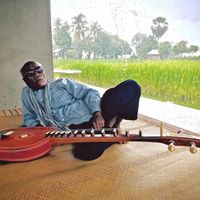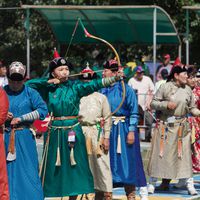UNESCO inscribes new Intangible Cultural Heritage elements 2020

During this year’s session (14 to 19 December, online), the UNESCO Intergovernmental Committee for the Safeguarding of the Intangible Cultural Heritage inscribed three elements on the List of Intangible Cultural Heritage in Need of Urgent Safeguarding, and 29 elements on the Representative List of the Intangible Cultural Heritage of Humanity. The sauna culture of Finland, Switzerland's craftsmanship of watchmaking and Singapore's hawker food culture are among those joining the inscriptions on UNESCO’s Intangible Cultural Heritage Lists, which now feature elements from a total of 131 States.
This year saw the highest number of multi-country nominations, with 14 inscriptions testifying to the ability of intangible cultural heritage to bring people together and promote international cooperation.
Additions to the Representative List of the Intangible Cultural Heritage of Humanity from Asia and Europe ASEM member countries:
Republic of Korea – Yeondeunghoe, lantern lighting festival in the Republic of Korea. Yeondeunghoe, lantern lighting festival, takes place throughout the Republic of Korea. As the eighth day of the fourth lunar month (Buddha’s birthday) approaches, streets are hung with colourful lanterns and crowds holding handmade lanterns gather for a celebratory parade. The annual festival starts with the sacred ritual of bathing an image of the baby Buddha. This is followed by a public procession, after which participants gather for recreational events and collective games. The festival plays a key role in integrating society and is a time of joy in which social boundaries are temporarily erased.
Singapore – Hawker culture in Singapore, community dining and culinary practices in a multicultural urban context. Hawker culture is present throughout Singapore. Hawkers prepare a variety of food for people who dine and mingle at hawker centres. These centres serve as ‘community dining rooms’ where people from diverse backgrounds gather and share the experience of dining together. Activities such as chess-playing, busking and art-jamming also take place. Having evolved from street food culture, hawker centres have become markers of Singapore as a multicultural city-state. Hawkers often specialize in a particular dish refined over many years and transmit their recipes, knowledge and skills to younger family members or apprentices.
Spain—Wine Horses. Los Caballos del Vino is an equestrian ritual that takes place each year from 1to 3 May in Caravaca de la Cruz, involving a series of events. First, the horses are dressed in richly embroidered cloaks and various parades are held to showcase them. The most awaited moment is a race up the hill to the castle, when prizes are awarded to the best racers and finest cloaks. Wine-growing and horse-breeding form an inherent part of the economy, history and culture of the area and the festival showcases values such as comradeship and the relationship between humans and horses.
Switzerland, France — Craftsmanship of mechanical watchmaking and art mechanics. The skills related to the craftsmanship of mechanical watchmaking and art mechanics are used to create objects designed to measure and indicate time, art automata and mechanical androids, sculptures and animated paintings, music boxes and songbirds. These technical and artistic objects all feature a mechanical device that generates movements or emits sounds. While serving an economic function, these skills have also shaped the architecture, urban landscape and everyday social reality of the regions concerned, where craftsmanship remains particularly dynamic.
China — Taijiquan. Taijiquan is a traditional physical practice characterized by relaxed, circular movements in concert with breath regulation and cultivation of a righteous and neutral mind. Originating during the mid-17th century in Henan Province in central China, the practice has spread to the rest of the country and is followed by a wide array of people. Influenced by Daoist and Confucian thought and traditional Chinese medicine, the element has developed into several schools (or styles) named after a clan or a master.
China, Malaysia — Ong Chun/Wangchuan/Wangkang ceremony, rituals and related practices for maintaining the sustainable connection between man and the ocean. The Ong Chun ceremony and related practices is rooted in folk customs of worshipping Ong Yah, a deity believed to protect people and their lands from disaster. The element is centered in coastal communities in China’s Minnan region and in Melaka, Malaysia. The ceremony includes welcoming Ong Yah to temples or clan halls, delivering 'good brothers' (people lost at sea) from torment, and honouring the connection between people and the ocean. Performances during the procession feature different types of dancing.
Czechia — Handmade production of Christmas tree decorations from blown glass beads. The handmade production of Christmas tree decorations from blown glass beads, uses beads that are silvered, coloured and decorated by hand. Considered a key cultural element of the Giant and Jizera Mountain regions of North Bohemia, the traditional craft has been passed down through families for generations. It is also safeguarded by the Kulhavý family workshop, the only small production workshop to have survived economic transformation. The creation of Christmas ornaments such as these appear in folk tales about Krakonoš, the legendary ruler of the mountains.
Finland — Sauna culture in Finland. Sauna culture is an integral part of the lives of the majority of the Finnish population. Traditionally the sauna was considered a sacred space, 'a church of nature'. It is not only used to wash one’s body, but also to cleanse the mind and enjoy a sense of inner peace. There are a variety of forms and approaches in sauna culture, with none taking precedence over another. Traditions are transmitted through families and can be practised in private homes or public places.
France, Belgium, Luxembourg, Italy — Musical art of horn players, an instrumental technique linked to singing, breath control, vibrato, resonance of place and conviviality. The musical art of horn players, an instrumental technique linked to singing, breath control, vibrato, resonance of place and conviviality relates to the techniques and skills used to play the horn. Playing the horn is a performative art open to musical creativity and practised on festive occasions. Players come from all backgrounds and this great social mix is one of the hallmarks of current horn practice. Horn music maintains a vast, lively musical repertoire constantly enriched since the 17th century and a great sense of belonging and continuity stems from interpreting this common repertoire.
Indonesia, Malaysia — Pantun. Pantun is a rhyming form of Malay verse. It is the most widespread oral form in maritime Southeast Asia. Many verses express love of a romantic partner, family, community, and the natural world. Pantun is a socially acceptable medium of indirect communication and also provides moral guidance as verses contain religious and cultural values. Pantun is recited in song and writing at weddings, rituals, and official ceremonies.
Italy, France — The art of glass beads. The art of glass beads is linked to the wealth of knowledge and mastery of a material (glass) and an element (fire). It uses specific traditional tools and processes. Different types of beads are produced, such as a lume and da canna beads in Italy, or hollow beads made either on a mandrel or by blowing into a hollow cane in France. Gifts made with glass beads are used to mark certain events and social occasions and the practice promotes social cohesion and dexterity in manual and craft work.
Japan — Traditional skills, techniques and knowledge for the conservation and transmission of wooden architecture in Japan. Traditional skills, techniques and knowledge for the conservation and transmission of wooden architecture in Japan involves a set of traditional skills, techniques and knowledge, including sakan plastering, harvesting of Japanese cypress bark, lacquer painting, production of tatami mats, and much more. Wood has been used in houses since ancient times, with master craftsmen training apprentices as successors. Nowadays, knowledge and traditional skills are mainly transmitted through preservation associations. Restoration of traditional wooden structures requires cooperation, fosters social cohesion and strengthens the cultural identity of communities.
Kazakhstan, Kyrgyzstan, Turkey — Traditional intelligence and strategy game: Togyzqumalaq, Toguz Korgool, Mangala/Göçürme. Traditional intelligence and strategy game: Togyzqumalaq, Toguz Korgool, Mangala/Göçürme is a traditional game played on either dedicated or improvised boards such as pits on the ground. The game has several variations and can be played with pellets made of stone, wood, nuts or seeds, which are distributed across the pits. The player who gathers the most pellets wins. The practice is also linked to other traditional crafts such as wood and stone carving and jewellery making. The game improves players’ cognitive, motor and social skills, and is transmitted both informally and through formal education.
Malta — Il-Ftira, culinary art and culture of flattened sourdough bread in Malta. Il-Ftira, culinary art and culture of flattened sourdough bread in Malta, is a key part of the cultural heritage of the Maltese archipelago. Ftira has a thick crust and light internal texture, characterized by an open crumb. The halved loaf is filled with Mediterranean-type ingredients such as olive oil, tomatoes, capers, and olives, with seasonal variants. Eating ftira as a filled snack or appetiser fosters a shared identity in Malta, and skilled bakers are required to shape it by hand. Apprentices learn the practice in bakeries and various other types of training programmes are also available.
Poland, Belarus — Tree beekeeping culture. Tree beekeeping culture includes knowledge, skills, practices, rituals and beliefs connected to wild bee-breeding in tree hives or log hives in forest areas. Tree beekeepers take care of bees in a special way by trying to minimize any interference with their natural life cycle. Tree beekeeping culture has given rise to numerous social practices and culinary and medicinal traditions. Transmission takes place mainly within tree beekeeping families and through brotherhoods. The practice fosters a sense of community and a shared awareness of responsibility to the environment.
The Representative List seeks to enhance visibility for the traditional practices and know-how of communities. It now numbers 492 elements.
Image: Handmade glass Christmas ornaments from Czech Republic. Patterns of ornaments © Tomáš Brabec, 2018
Similar content
24 Jun 2016 - 26 Mar 2017
09 Jun 2017 - 20 Jun 2017
posted on
11 Dec 2016
04 Oct 2019 - 06 Oct 2019


